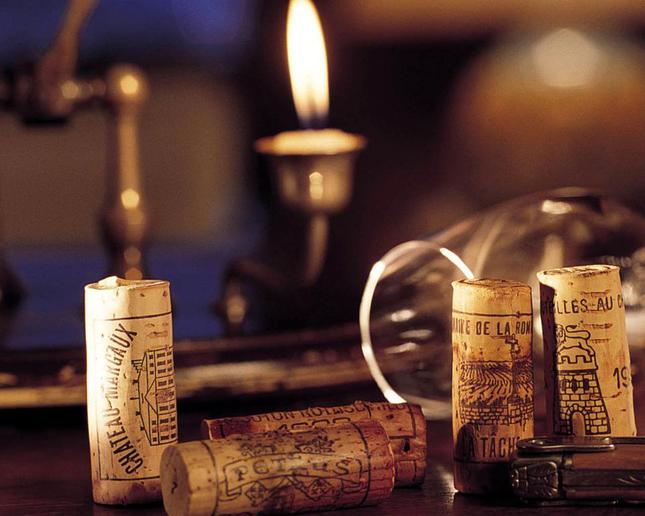To Viet
Not long ago, I accompanied a close friend to drink wine in a famous wine cellar on Le Phung Hieu Street in Hanoi. Being a wine connoisseur, my friend commented that the bottle of Chilean wine we were drinking had been affected by high temperatures during storage or transportation, because the tannins in the wine had turned into a bitter, astringent form.
 Seeing that I agreed, he asked: "Do you think we have the right to ask the waiter to change this bottle of wine?" I said: "I don't know about your country, but in the West, diners can only ask the waiter to change the bottle of wine when it smells of cork." Curiously, my friend asked: "I've also heard of the smell of cork, but I can't imagine what it smells like. When I have time, I should probably learn about the 54 basic smells and 12 defective smells of wine so as not to be left behind."
Seeing that I agreed, he asked: "Do you think we have the right to ask the waiter to change this bottle of wine?" I said: "I don't know about your country, but in the West, diners can only ask the waiter to change the bottle of wine when it smells of cork." Curiously, my friend asked: "I've also heard of the smell of cork, but I can't imagine what it smells like. When I have time, I should probably learn about the 54 basic smells and 12 defective smells of wine so as not to be left behind."
Indeed, in 2009, the French conducted a large-scale study in the Bordeaux region on the phenomenon of corked wine. The conclusion drawn from this study showed that 2-3% of Bordeaux wine bottles using Liège corks were affected by this unpleasant smell. That also means that every year, 12-15 million bottles of Bordeaux wine have corked smell, a very unpleasant loss. We should also know that among the many defective smells of wine such as plant smell, rotten apple smell, alcohol smell, saltpeter smell, sulfur smell, earth smell, rotten egg smell... only corked smell is the only smell that diners can ask the waiter to exchange for another bottle of wine of the same type. Because if the smells we just mentioned can be eliminated after a few minutes to about 15-20 minutes after opening, the cork smell will never be eliminated, even if we leave the wine cork for many hours.

So what is cork smell?
The cork smell is caused by the interaction of chlorine with fungi, phenols and other flavors in wine. It is a musty, pungent, unpleasant smell, quite different from the delicate, vegetal aromas normally associated with Sauvignon Blanc or Cabernet Sauvignon grapes.
Cork is made from Quercus Suber, a stripped oak that grows at altitudes of 100-300 m above sea level. This oak is well suited to sandy soils in areas where winter temperatures do not drop below -5°C, with an average rainfall of 400-800 mm/year. Portugal is the world's largest producer of cork, with 670,000 hectares of stripped oak, accounting for 30% of the world's cork production; followed by Spain with 480,000 hectares of stripped oak.

Peeled oak has the characteristic of being very light and floating on water. Since ancient times, people have known how to use oak bark to make life buoys and buoys to fix fishing nets. Oak corks (liège) were used in wine making and preservation technology from 500 BC to 500 AD. After this period, the collapse of the Roman Empire, constant wars and stagnant trade caused oak shells to be forgotten. It was not until 1600 that oak shells were widely used again in the wine industry and took a unique position among all materials for making corks such as sawdust, oak chips, plastic and screw caps.
The messages behind it
The production of a cork is a laborious process. Each Quercus Suber oak tree must be planted for at least 25 years to provide us with a 70 mm thick bark. When the Quercus Suber oak tree is 14 years old, workers begin to peel off the first layer of bark, like we peel off cinnamon bark, but this layer of bark cannot be used in the wine cork industry and is discarded because it is too rough, coarse and contains a lot of tannin. It takes 12 years for the second, smoother layer of bark to regenerate before it can be used as a wine cork. Thanks to its very good elasticity, oak bark is considered the best material for making corks. In oak bark, there is 45% Suberine which is the substance that creates elasticity, 27% Lignine which is the binding substance, 12% Polysaccharides which is the structural substance, 6% tannin or also known as colorant, 5% Roides which is the waterproof substance, and 5% is water, sugar, mineral salts...


Although the harvested oak bark was left out in the sun and rain for 2 years to stabilize its elasticity, then put into a tank of boiling water mixed with Chlorine to kill parasitic bacteria before being polished and punched into corks, some parasitic bacteria still survived in the tiny cracks of the oak bark and developed into TCA (Trichloranisole) or TTCA (Tetrachloroanisole) in wine.
Just 4.6 nanograms of TCA or TTCA in stabilized wines or 1.5 nanograms in Champagne are needed to perceive the cork.
That is not to say that anyone can perceive this smell, but it must be practiced in practice through school or through a training course in tasting and evaluating the quality of wine.


































